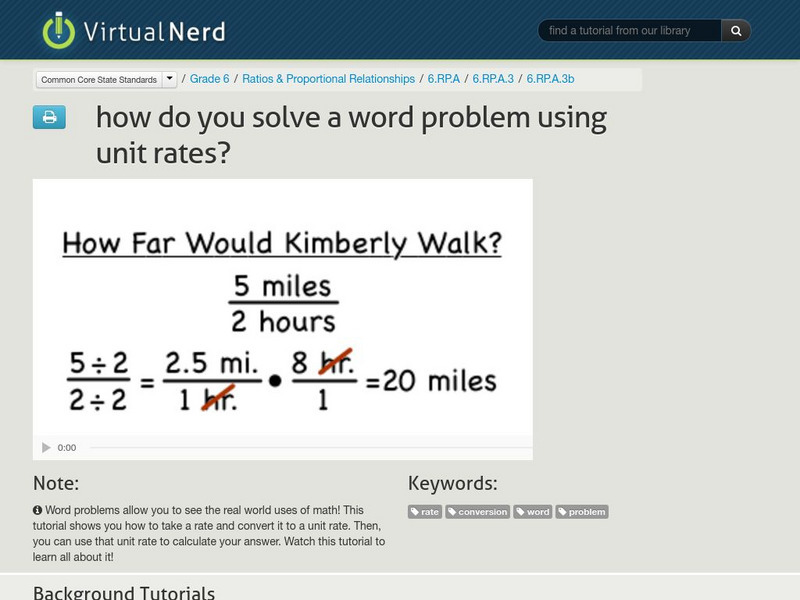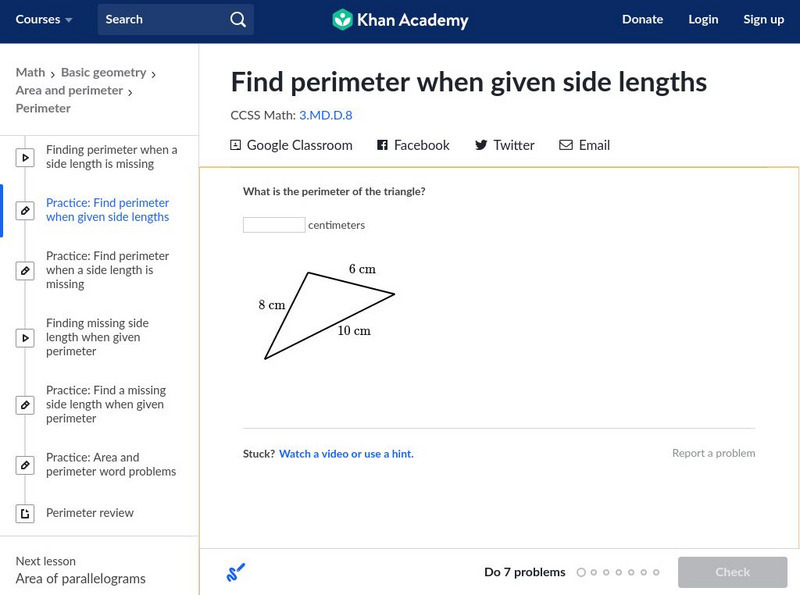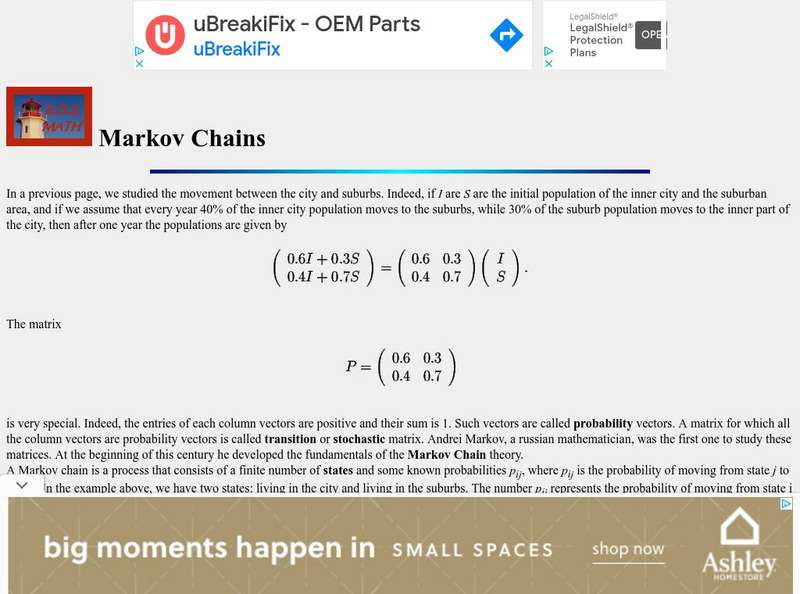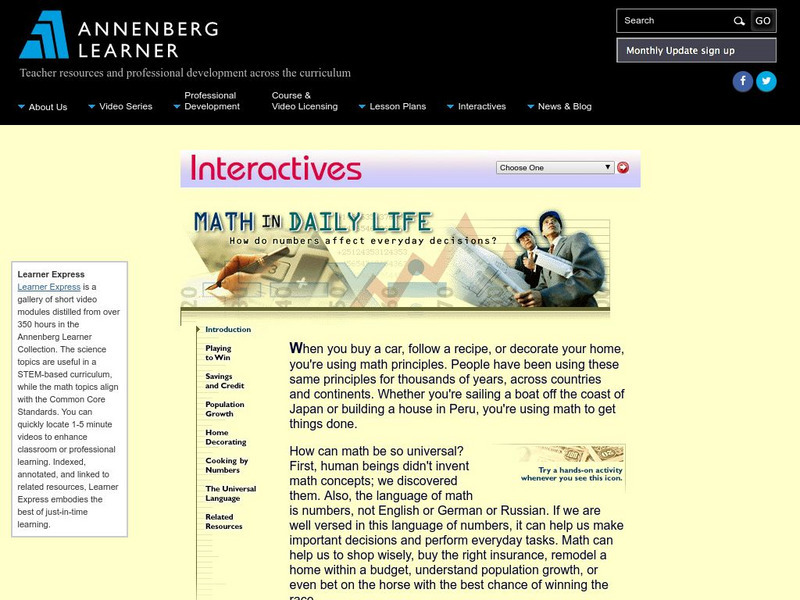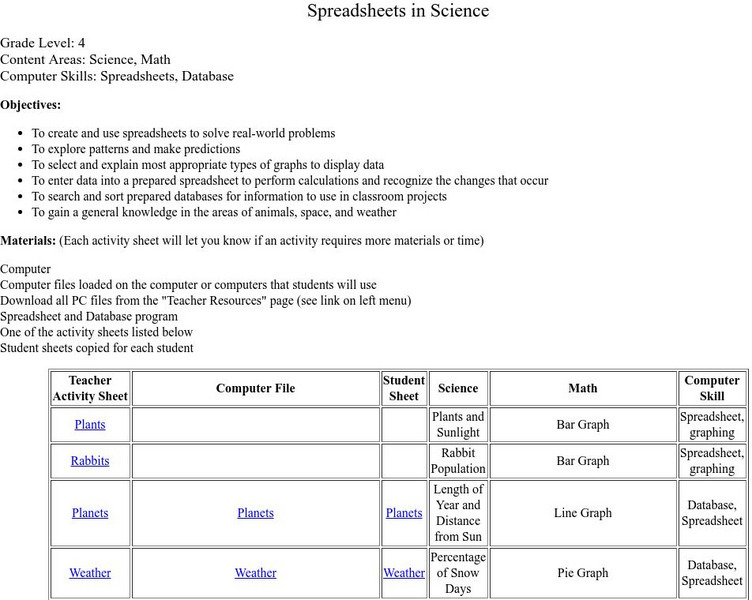BBC
Bbc World Service: Figure It Out: Winning the Lottery
The learning activity demonstrates to students real-world applications of mathematics. The resource shows examples of how probability and chance can be used in the real world.
Better Lesson
Better Lesson: Visually Representing Percent Word Problems (Day 2)
Using a variety of visual representations to solve real world percent problems.
Virtual Nerd
Virtual Nerd: How Do You Solve a Word Problem Using Unit Rates?
Word problems allow you to see the real world uses of math! This tutorial shows you how to take a rate and convert it to a unit rate. Then, you can use that unit rate to calculate your answer. Watch this tutorial to learn all about it!
Discovery Education
Discovery Education: Web Math: Solve a Linear Equation Involving One Unknown
This WebMath site explains how to enter your equation with one variable and solve for that variable. It explains step-by-step how to solve the equations and gives the final solutions.
Khan Academy
Khan Academy: Find Perimeter When Given Side Lengths
Find perimeter of figures when given an image or context. Students receive immediate feedback and have the opportunity to try questions repeatedly, watch a video or receive hints. CCSS.Math.Content.3.MD.D.8 Solve real world and...
Math Medics
S.o.s. Math: Markov Chains
A step-by-step explanation of using Markov Chains to solve a real-world problem.
Khan Academy
Khan Academy: Volume Word Problems
Find the volume of rectangular prisms to solve word problems. Students receive immediate feedback and have the opportunity to try questions repeatedly, watch a video or receive hints.
Cuemath
Cuemath: Pythagoras Theorem
In this lesson, you will learn about the Pythagoras theorem, its derivations, and equations followed by solved real-world problems on the Pythagoras theorem triangle and squares.
Illustrative Mathematics
Illustrative Mathematics: 6.rp Jim and Jesse's Money
In this real-world context, 6th graders are given the ratio of Jim's money to Jesse's and the amounts they have spent so far on a road trip, and they must calculate what each person had at the start of the trip. Aligns with 6.RP.A.3.
Khan Academy
Khan Academy: Quadratic Word Problems (Standard Form)
Solve real-world word problems that involve quadratic models. In this exercise, that models are given in standard form. Students receive immediate feedback and have the opportunity to try questions repeatedly, watch a video or receive...
Khan Academy
Khan Academy: Linear Equations Word Problems: Tables
Solve word problems about real world relationships that are given in tables.
Annenberg Foundation
Annenberg Learner: Math in Daily Life
Read about what math has to do with cooking, chances of winning a game, even decorating your home. Teachers may want to peruse this site for ideas about real world applications in their lesson planning.
Quia
Ixl Learning: Divide Fractions by Whole Numbers Using Models
Practice dividing fractions by whole numbers with numbers using models.
Better Lesson
Better Lesson: Finding the Area of a Rectangle
Sixth graders use the area formula for rectangles to solve real world and mathematical problems.
Shodor Education Foundation
Shodor Interactivate: Lesson: Graphing and the Coordinate Plane
This lesson plan helps students understand how to graph ordered pairs on the coordinate plane. Lots of resources are available to teachers and students at this website.
NC State University
North Carolina State University: Spreadsheets in Science
Intriguing lesson from North Carolina State University using a spreadsheet to solve real world science problems. Contains downloadable files for student activities.
NumberNut
Number Nut: Breaking Down Fractions
Discover fractions in the world around us in this instructional activity that also examines how fractions are divided. Detailed examples and pictures presented to explain this concept along with key vocabulary. A brief introduction to...
PBS
Pbs Teachers: Math Space Odyssey: How Much Do You Weigh in Outer Space?
Demonstrate the ability to apply the use of decimals, fractions, ratios and proportions to situations based upon given information about planets in the solar system.




